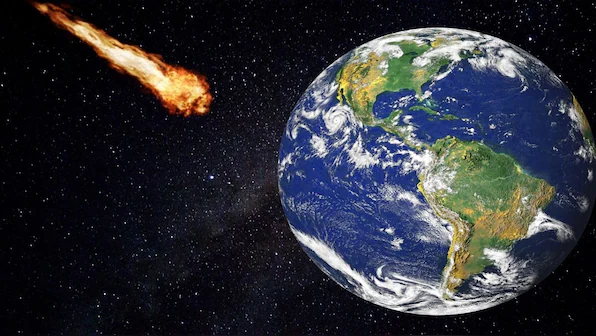Apophis
An asteroid known as “Apophis,” comparable in size to the Empire State Building, has been identified as a potential threat to Earth, with its closest approach predicted for 2029.
Officially named Asteroid 99942, Apophis is approximately 1,200 feet (370 meters) wide, making it larger than 90% of known asteroids. It follows a 324-day orbit around the Sun, passing relatively close to Earth roughly once every decade.
This asteroid has earned the nickname “city killer” due to the devastating impact it could have on populated areas if it were to collide with our planet.
Apophis was first discovered in 2004 and was named after the Egyptian god of chaos, reflecting initial fears about its potential collision course with Earth.
In the years following its discovery, astronomers identified three potential dates—2029, 2036, and 2068—when Apophis could come dangerously close to our planet.
Early estimates put the odds of a direct impact in 2029 at 2.7%, raising alarm within the scientific community and sparking extensive research and simulations.
However, by 2021, NASA had refined its calculations based on more precise data and ruled out the possibility of Apophis striking Earth in 2029.
These new calculations also dismissed the threat for 2036, significantly reducing the level of concern. But despite NASA’s reassurances, new research has partially revived some of the original fears.
Although Apophis is no longer seen as an imminent threat, scientists are keeping a close watch on its future trajectories.
On April 13, 2029, Apophis is predicted to come within 19,400 miles (31,200 kilometers) of Earth, the closest approach of an asteroid of this size in recorded history.
This distance is well within the orbit of Earth’s geostationary satellites, offering scientists a unique opportunity to study the asteroid up close.
Although astronomers are confident that Apophis will not hit Earth on its current path, there remains a slim chance that its trajectory could be altered by external forces.
Some simulations suggest that the gravitational pull of other celestial bodies could shift its course, raising concerns about potential impacts in the more distant future, such as 2068.
While the likelihood of a collision remains extremely low, the catastrophic consequences of such an event—should it occur—are enough to keep the scientific community vigilant in monitoring Apophis and other near-Earth objects.










